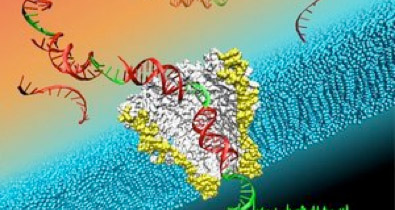
What makes you… you? Well, it’s your DNA, of course. Deoxyribonucleic acid is a mouthful but it is the blueprint for all biology. Everything from the color of your eyes to how fast a cheetah can run is all programmed into DNA. How cool is that?
In the last 20 years, scientists and engineers have created machines to sequence DNA, which lets them read it much like you read a book, except it’s too hard to read your DNA from front to back in one long stretch. So the DNA is first chopped up so the pieces can be read individually, then finally the whole thing is put back together.
That’s hard to do because there are 3 billion nucleotides (the building blocks of DNA)in your genome and the pieces that are being read are only a few hundred nucleotides long. Imagine taking a book and ripping it up into a zillion pieces, reading each piece and then figuring out what the story was all about.
One of the most important developments in reading the human genome was in creating the computers and software used to figure out how to put the pieces back together. Nanotechnology is now being used to create the next generation of DNA sequencing machines that will be even faster than the ones used today. The current machines read these tiny pieces of DNA too slowly (and too expensively) to make it possible to read each person’s own genome.
One way that nanotechnology is being used is to create nanopores, tiny little holes just big enough for a piece of DNA to slide through. DNA is only 3 nanometers wide, that means about 3,000 strands would fit across the width of a hair.Using some very neat electronics, these machines can read individual nucleotides as they slide through the hole. Get a few thousand or a few million holes lined up and you can read lots of DNA all at one time. You still need a very powerful computer to put all these pieces together, but someday in the not too distant future you will be able to get your own genome figured out.
Why is this important? Well, a lot of diseases are caused by changes in your DNA. Also, the way certain medicines work depends upon your genetic makeup. So in the future, medicine will be more personalized and more effective once the doctor knows your genome, or genetic blueprint.
